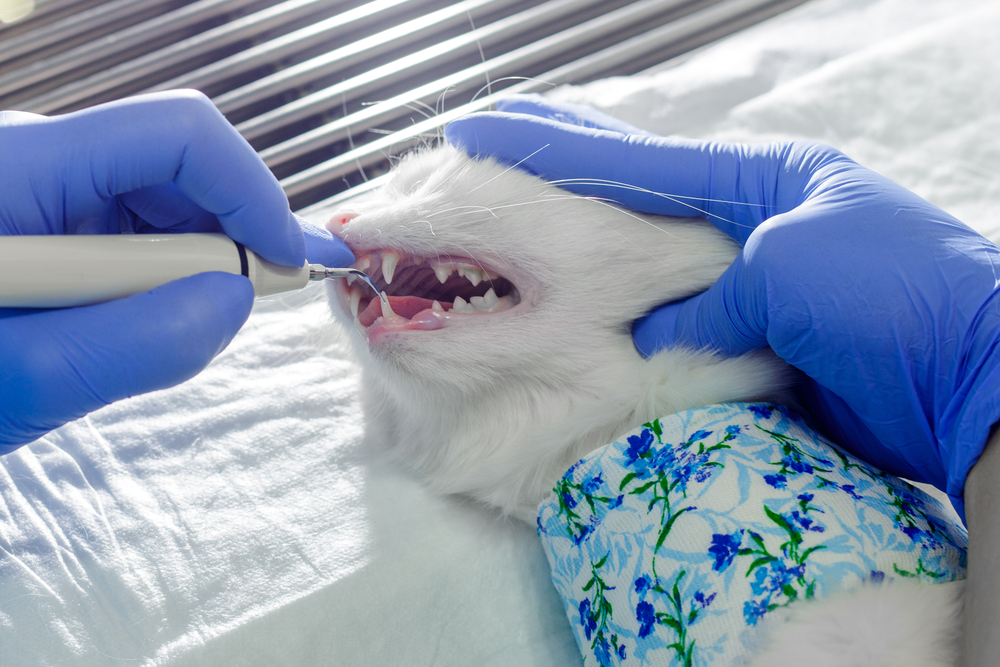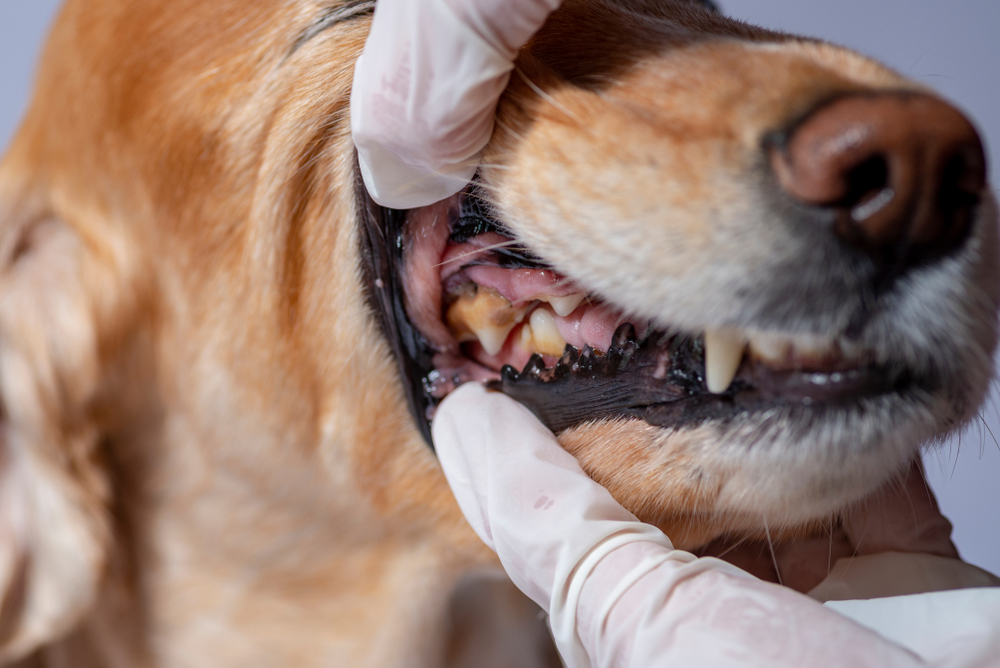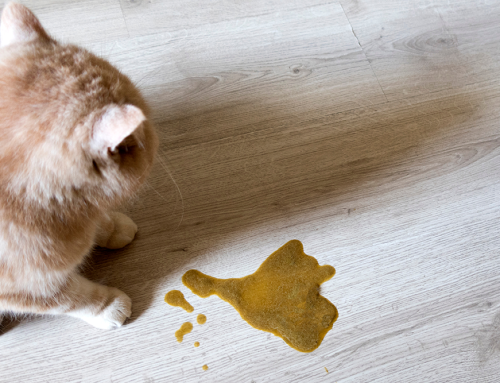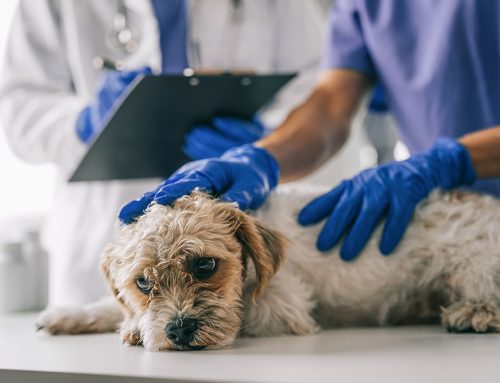Periodontal disease is a painful but preventable condition that can negatively impact your pet’s quality and length of life. After your pet eats, the food particles that remain in their mouth attract bacteria, which form deposits on their teeth called plaque. Minerals in the saliva precipitate and settle in these deposits, and harden into tartar. The plaque and tartar inflame the gingiva, allowing bacteria to invade under the gum line and damage the teeth support structures.
Our Wellness Animal Hospital team is committed to reducing dental health issues in pets, and we explain 10 potential consequences for your pet if they don’t receive appropriate dental care.
#1: Pet periodontal disease can cause bad breath
You may think foul breath is normal for pets, but the condition indicates periodontal disease. Your pet’s breath smells bad because of sulfur-producing compounds released by the bacteria in their mouth. If you find your pet’s breath offensive, they should be evaluated by our veterinary team to determine if periodontal disease is the problem.
#2: Pet periodontal disease can cause gingivitis
The first stage of periodontal disease is gingivitis. The plaque and tartar cause inflammation of your pet’s gums, which leads to swollen, bleeding gums that are uncomfortable. Your pet may have difficulty chewing, or you may find blood on their food or chew toys.
#3: Pet periodontal disease can cause loose teeth
After gingivitis, periodontal disease progresses through three additional stages, with more structural support for the tooth lost at every stage. As these structures break down, the tooth becomes unstable, which is painful for your pet, and may completely lose the connection in advanced disease stages. A lost tooth leaves a space where food can collect and attract more bacteria.
#4: Pet periodontal disease can cause tooth root abscesses
When bacteria enter a tooth’s root canal, the result is a tooth root abscess, which is painful, and your pet may stop eating, or eat on only one side of their mouth. Left untreated, a tooth root abscess can rupture and cause a draining hole in your pet’s face or jaw.
#5: Pet periodontal disease can cause an oronasal fistula
An oronasal fistula is an abnormal passageway between the nose and mouth and occurs when periodontal disease in an upper tooth invades the palate, creating an opening. Oronasal fistulas allow food and water to pass from the mouth into the nose, irritating the nose and sinuses and resulting in chronic sneezing, nasal discharge and, potentially, pneumonia. To address the problem, the affected tooth must be extracted and the passageway surgically closed.

#6: Pet periodontal disease can cause eye complications
Some of your pet’s upper tooth roots are close to their eyes. If one of these teeth is affected by dental disease, the resultant inflammation and infection can affect the eye, as well. This may seem like a primary eye problem, but the tooth causing the problem must be extracted, or the infection will progress and may lead to vision loss.
#7: Pet periodontal disease can cause jaw fractures
Chronic periodontal disease leads to bone loss, which weakens the bone and can lead to a pathologic fracture. Cats and small-breed dogs are at greatest risk for jaw fractures associated with periodontal disease.
#8: Pet periodontal disease can cause heart disease
Bacteria found in your pet’s mouth are often associated with heart diseases, such as endocarditis (i.e., inflammation and infection inside the heart) and valvular disease. In addition, pets who have periodontal disease are at increased heart disease risk.
#9: Pet periodontal disease can cause kidney and liver damage
The kidneys and liver are responsible for filtering the blood, so they are especially susceptible to oral bacteria that enter your pet’s bloodstream. The resultant infection and inflammation can significantly damage the affected organ.
#10: Pet periodontal disease can cause oral cancer
Chronic periodontal disease causes a persistent inflammation inside the mouth that may increase your pet’s oral cancer risk.
Pet periodontal disease can be prevented
Pet periodontal disease can lead to several serious health complications, but the condition can be prevented. Steps include:
- Annual dental exams — Your pet’s annual wellness visit includes an oral exam. These appointments are important to detect health conditions such as periodontal disease.
- Professional veterinary dental cleanings — Your dentist recommends that you have regular dental cleanings, and your pet’s teeth need the same attention. A professional veterinary dental cleaning is the only way to thoroughly and effectively remove plaque and tartar from your pet’s teeth and remove bacteria from under their gum line. Most pets need their teeth cleaned about once a year, but pets at high risk (i.e., small breeds, brachycephalic pets) may need more frequent care. Anesthesia is necessary to perform a professional veterinary dental cleaning to keep your pet safe and stress free, to take dental X-rays, and to allow our team to perform a thorough job. Dental X-rays are needed to accurately assess your pet’s dental health.
- Dental home care — In between professional veterinary dental cleanings, at-home dental care, including daily toothbrushing and dental treats, can help reduce plaque and tartar.
This three-pronged approach can help protect your pet from health complications caused by periodontal disease. Contact our Wellness Animal Hospital team to schedule an annual dental exam or a professional veterinary dental cleaning, so we can help your pet keep harmful dental disease and the associated pain at bay.







Leave A Comment